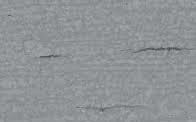What is the Plate Lamination Defect?
Plate lamination defect is one of the primary processing discontinuity that originates during hot or cold forming processes and is considered as a serious metal plate defect.
All the metals contain discontinuities at micro and macro levels. These discontinuities, when above the acceptance level, are termed as defects. The discontinuities in metal are classified according to the stage of manufacturing in which they initiate.
Plate lamination defect can be defined as flat and thin subsurface separations present inside metal plate, parallel to the surface of the plates. The sources of this defect are inherent discontinuities present in metal such as inclusion and porosity, which are flattened during the rolling process.
Carbon Steel Plate Lamination Defect & Reasons

A carbon steel plate is produced by the process of hot or cold rolling a thick slab. During this process, carbon steel may pass through the rollers many times to achieve the desired thickness.
Each pass results in an increase in the area of the plate and decreases in thickness. Any discontinuity present in the metal, such as porosity or inclusions trapped in the slab, are elongated in the direction of rolling and results in laminate formation within the metal sheet.
The inclusions are particles larger than 0.5 µm and include sulfides, oxides, silicates, nitrides, etc. The higher concentration of oxides and sulfides in the carbon steel can lead to porosity which migrates to the center of the slab as cooling occurs from outside to inside.
The inclusions remain in the center during subsequent hot or cold rolling process. If there are enough inclusion present in the sheet, or the desired sheet thickness is less, these inclusion get exposed and results in separation of two layers of metal at the exit of rolling process, known as laminations.
Lamination in carbon steel plates can occur within the body of a plate or at edges. Plate lamination in carbon steel happens when folds or layers of plates are rolled together into a single plate thickness. These folds and layers do not bond together and will separate when metal is worked.
The laminates in the carbon steel plates drastically reduce the strength in the thickness direction. Lamination defect in steel plates is highly undesirable for dynamically loaded elements of steel structure such as high pressure/temperature storage tanks/vessels.
Lamination defect of a significant area will impair the structural performance of welded objects to the plate surface and may result in a local buckling failure. Edge lamination defect can reduce the integrity of connections made to the edge of a plate.
Plate Lamination Defect Acceptance criteria
The specifications for general requirements for steel plates for pressure vessel are given in ASME II Part-A, SA-20/SA-20M. The maximum allowed lamination is 25 mm (1 in) visible to the unaided eye on the edge of plate ready for shipment are acceptable and requires no further explorations.
However, any larger discontinuities should be explored to determine their depth. Discontinuity located in the same plane within 5% of plate thickness and separated by the distance less than the length of smaller of two adjacent discontinuities is considered as continuous discontinuity.
ASME II part-A SA-20 also set limits for the acceptance of removal of larger discontinuities by grinding given in Table A1.14.
Plate lamination defect detection
The presence of inclusions in the carbon steel plates provides the reliable assessment of possible lamination defects. There are several methods of inclusion detection in the carbon steel plates such as:
Ultrasonic scanning (US)Scanning acoustic microscope (SAM) methodX-ray detectionChemical dissolutionMagnetic particle inspection
The Conventional Ultrasonic Scanning is widely accepted test in which the transducer emits ultrasonic wave into the sample plate, the wave reflects back and is compared with initial input on the oscilloscope. The presence of inclusions or porosity will result in the distraction of sound waves. This method can be used to measure inclusions larger than 20µm.
SAM can detect inclusions from the surface to the centerline of the product. The sample of the plate is scanned with the help of spiraling detector same as US system.
X-rays can detect the laminations within the structure of plate.
The chemical dissolution is a destructive method of testing presence of laminations or inclusions in the sheets and plates. The acid is used to dissolve the metal and detect the presence of inclusion.
The magnetic particle inspection can measure the presence of inclusions larger than 30 µm in steel sheets. The method involves generation of homogeneous field parallel to sheet surface.
Magnetic flux will bend in the presence of inclusions or lamination beyond the surface of the sheet. However, these is a limitation of this technique that it can detect only the surface or near to surface defects. Therefore if the lamination is not near the surface, it will not be detected by this method
